Ancient Egyptian temple reveals previously unknown star constellations
One constellation is called "Apedu n Ra," or "The Geese of Ra."
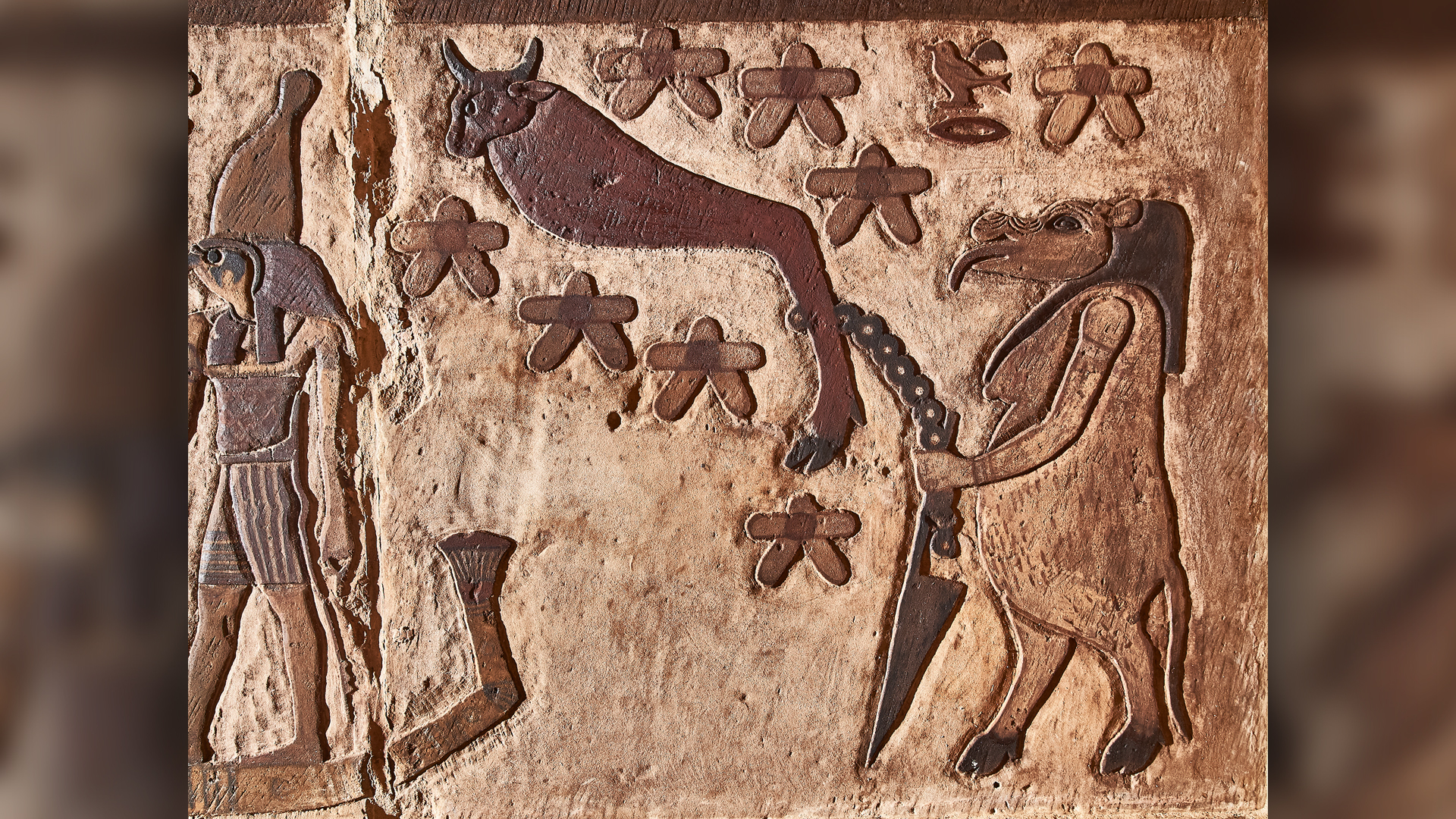
The restoration of a soot-filled ancient Egyptian temple has revealed the previously unknown names of ancient Egyptian constellations, according to experts in Germany and Egypt.
The restoration has also uncovered the gorgeous original colors the ancient Egyptians painted the 2,000-year-old temple.
As workers in Egypt remove soot and dirt from the temple, sometimes with a mixture of alcohol and distilled water, the original painted carvings and hieroglyphics beneath are so vibrant, "it looks like it was painted yesterday," project leader Christian Leitz, a professor of Egyptology at the University of Tübingen in Germany, told Live Science. "But we are not repainting anything, we are just removing the soot."
Related: In photos: 3,300-year-old Egyptian carving
During the restoration, researchers cleaned ancient carved scenes depicting the constellations, including the Big Dipper (known as Mesekhtiu) and Orion (known as Sah). They also found inscriptions about previously unknown constellations, including one called "Apedu n Ra," or "the geese of Ra," who is the ancient Egyptian sun deity, Leitz said.
However, without an image to accompany these descriptions, there's no way to know which stars in the night sky they describe, he said.
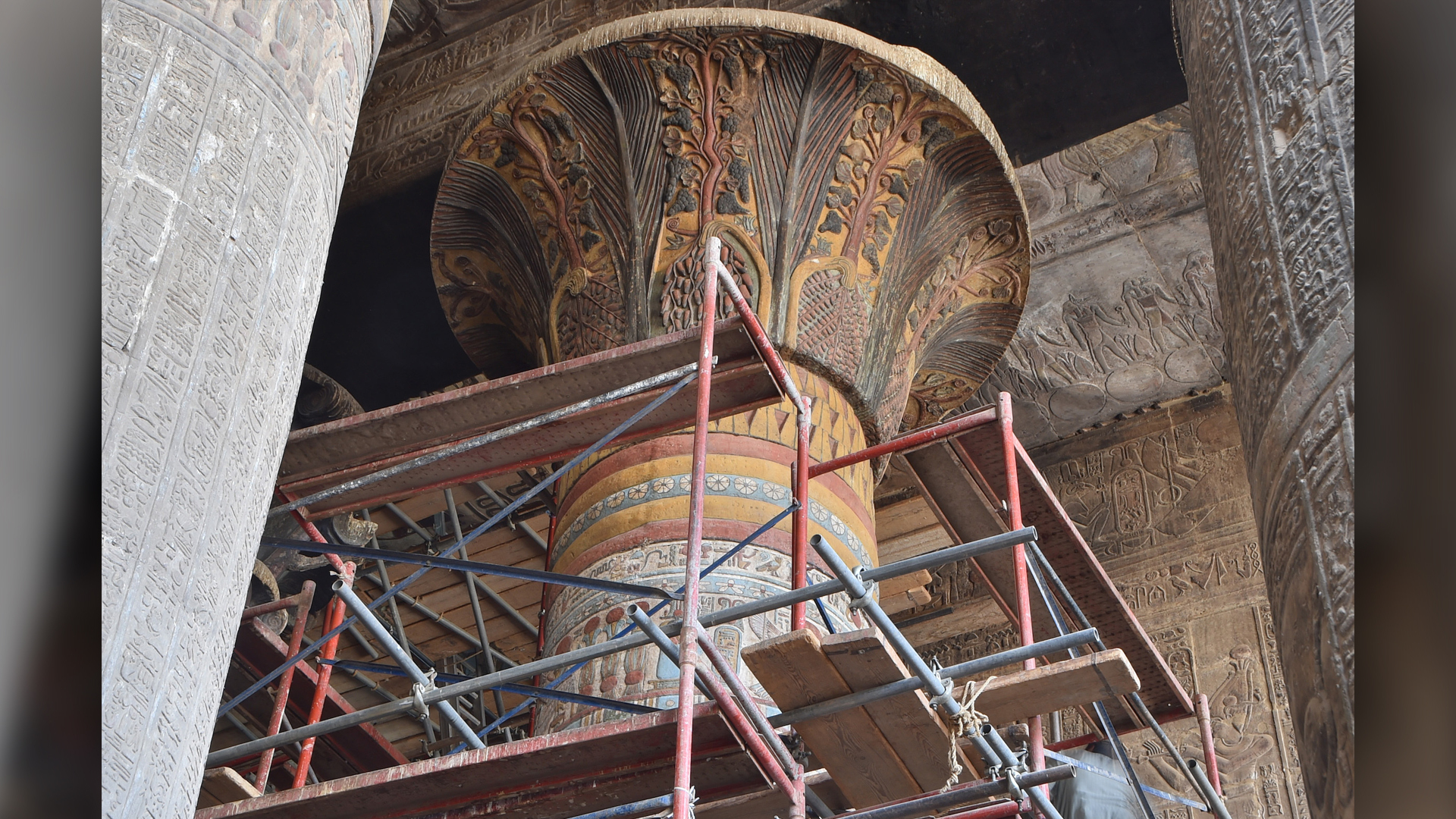
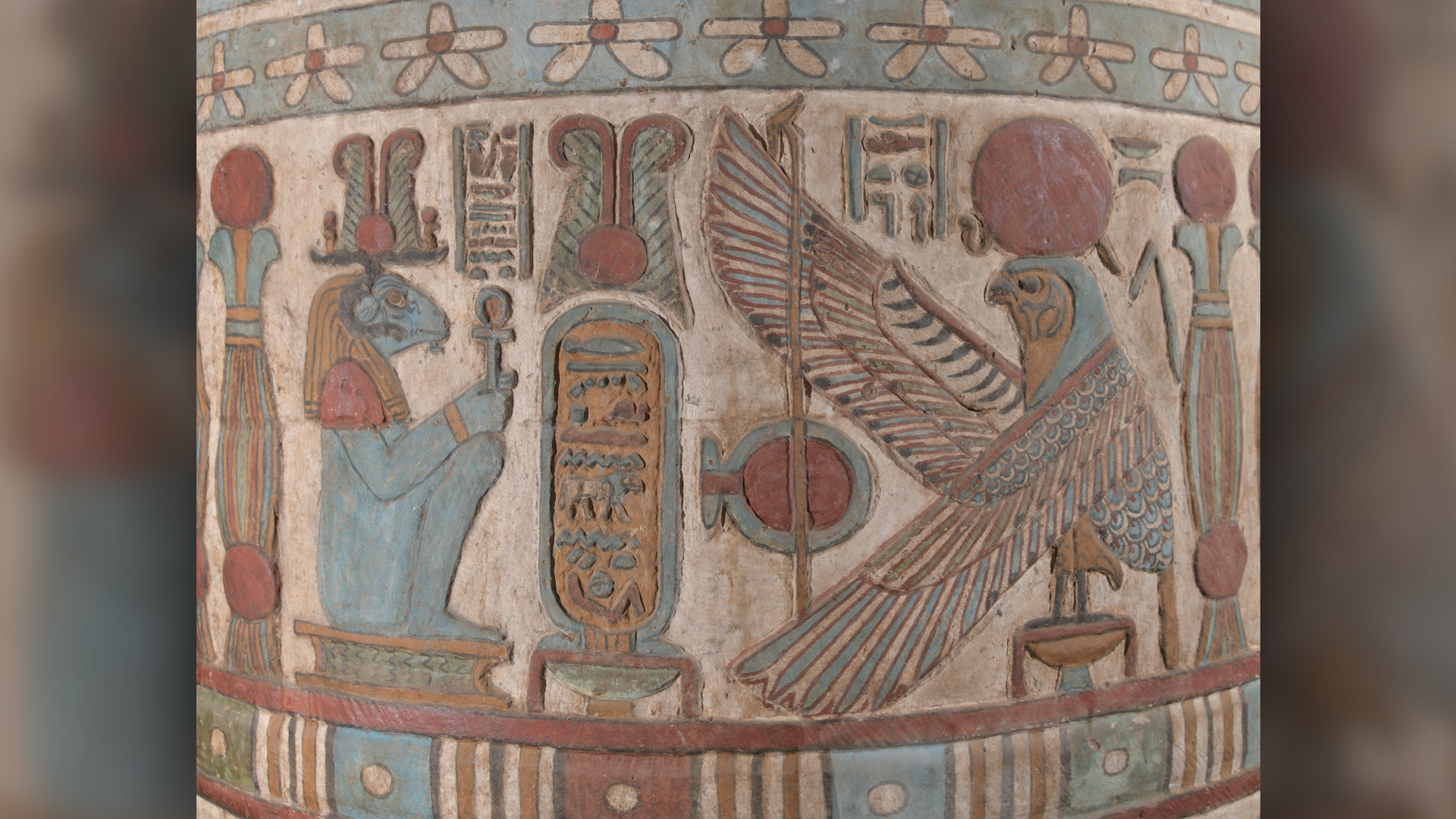
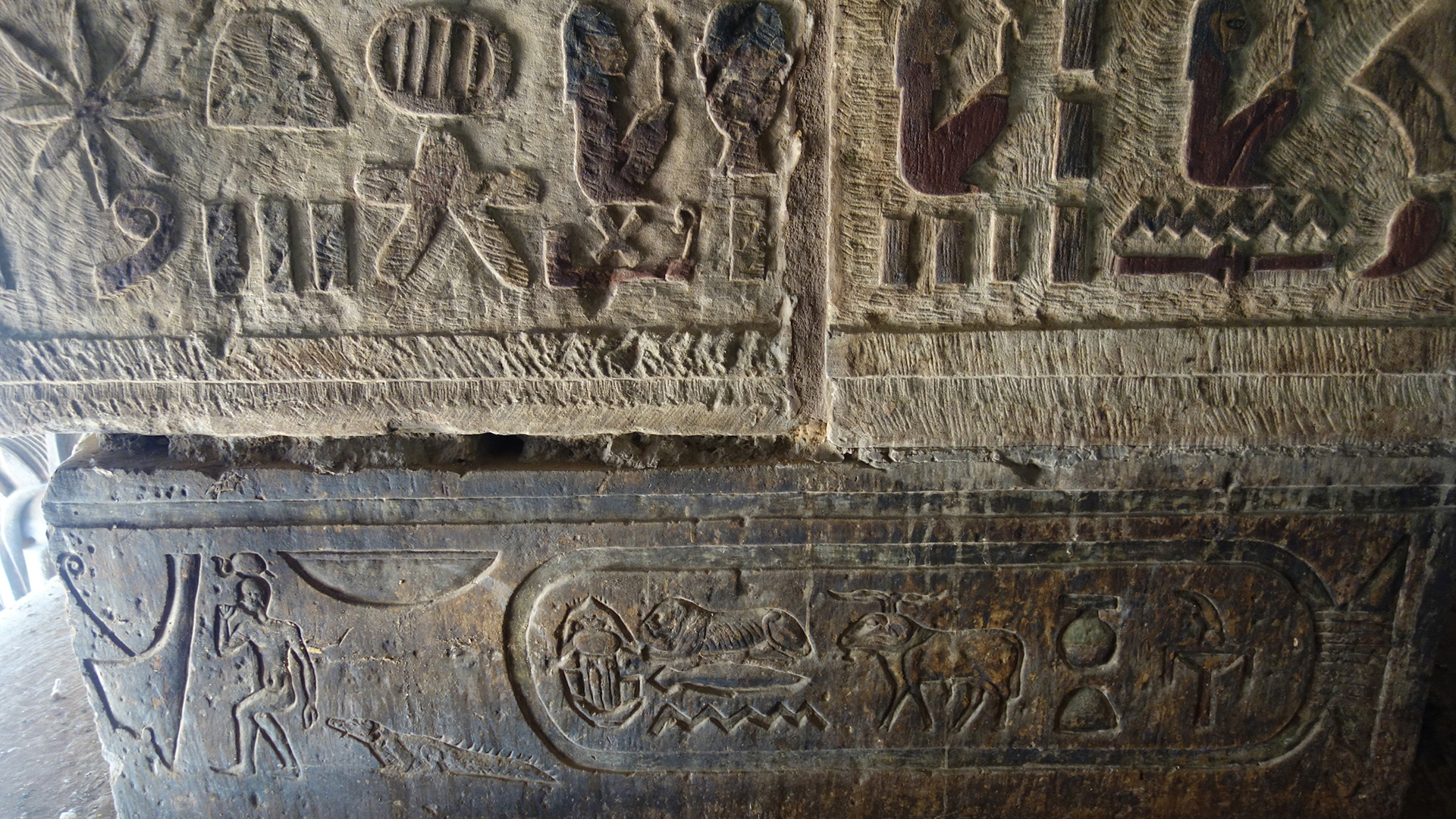
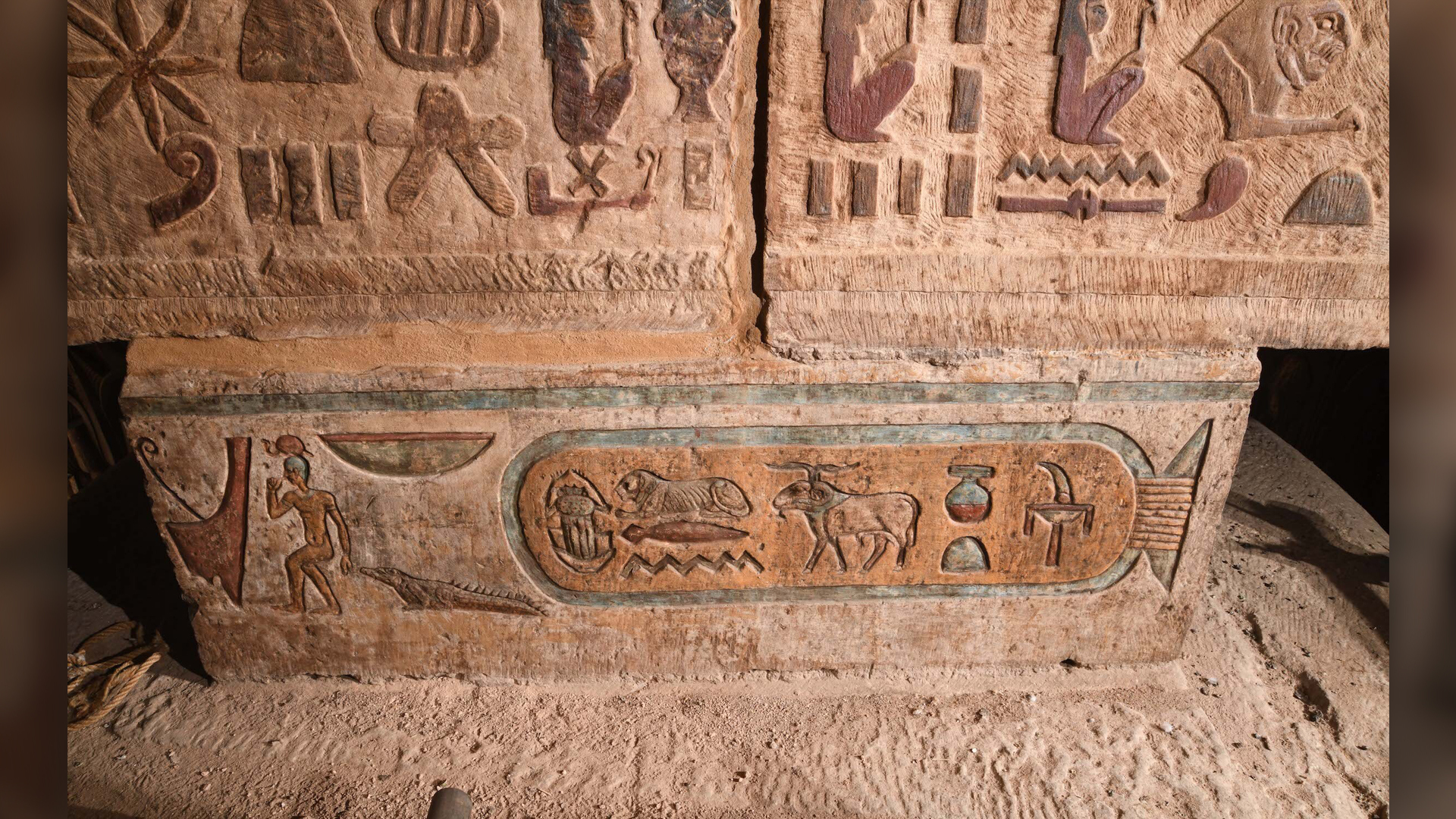
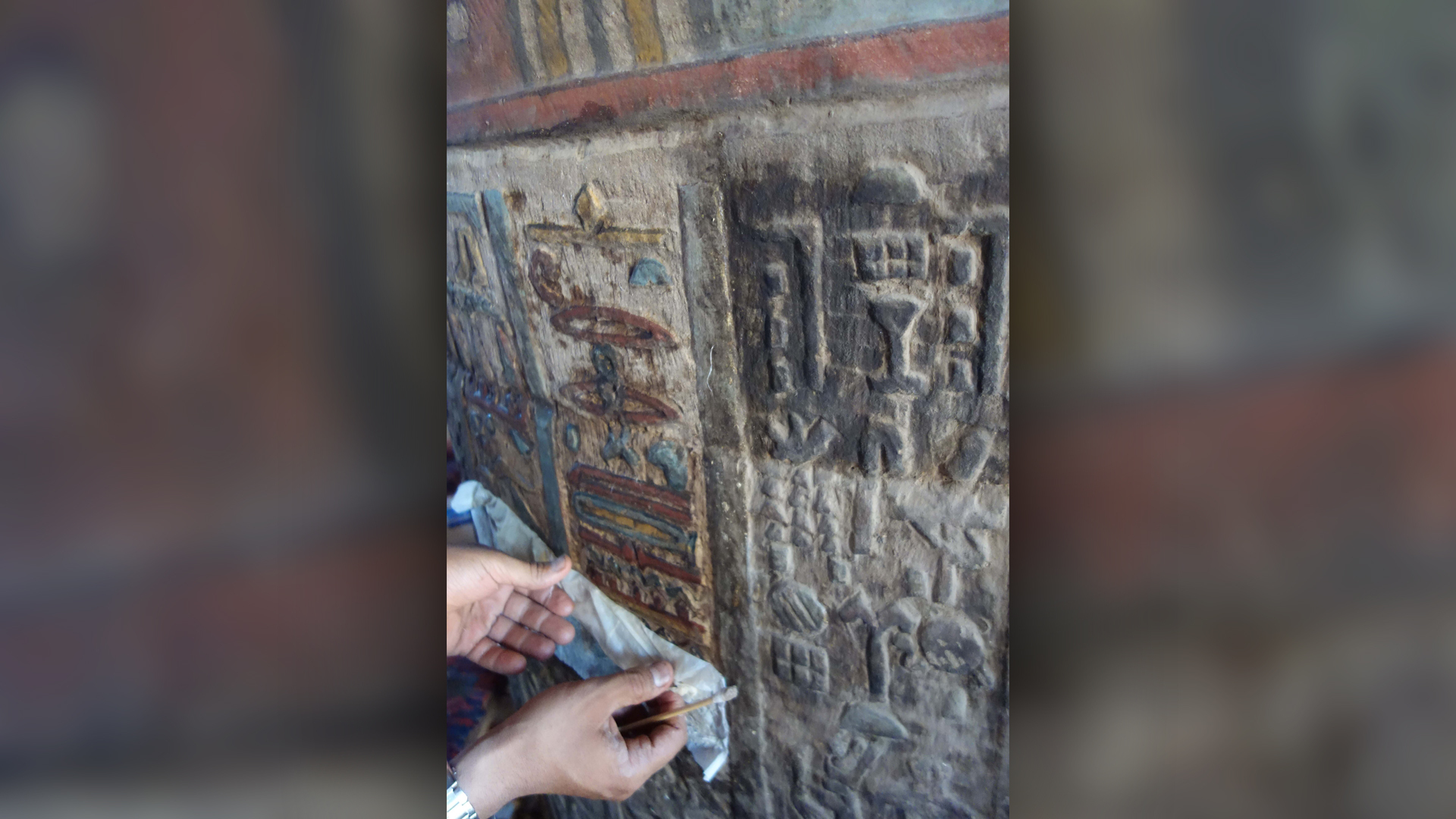
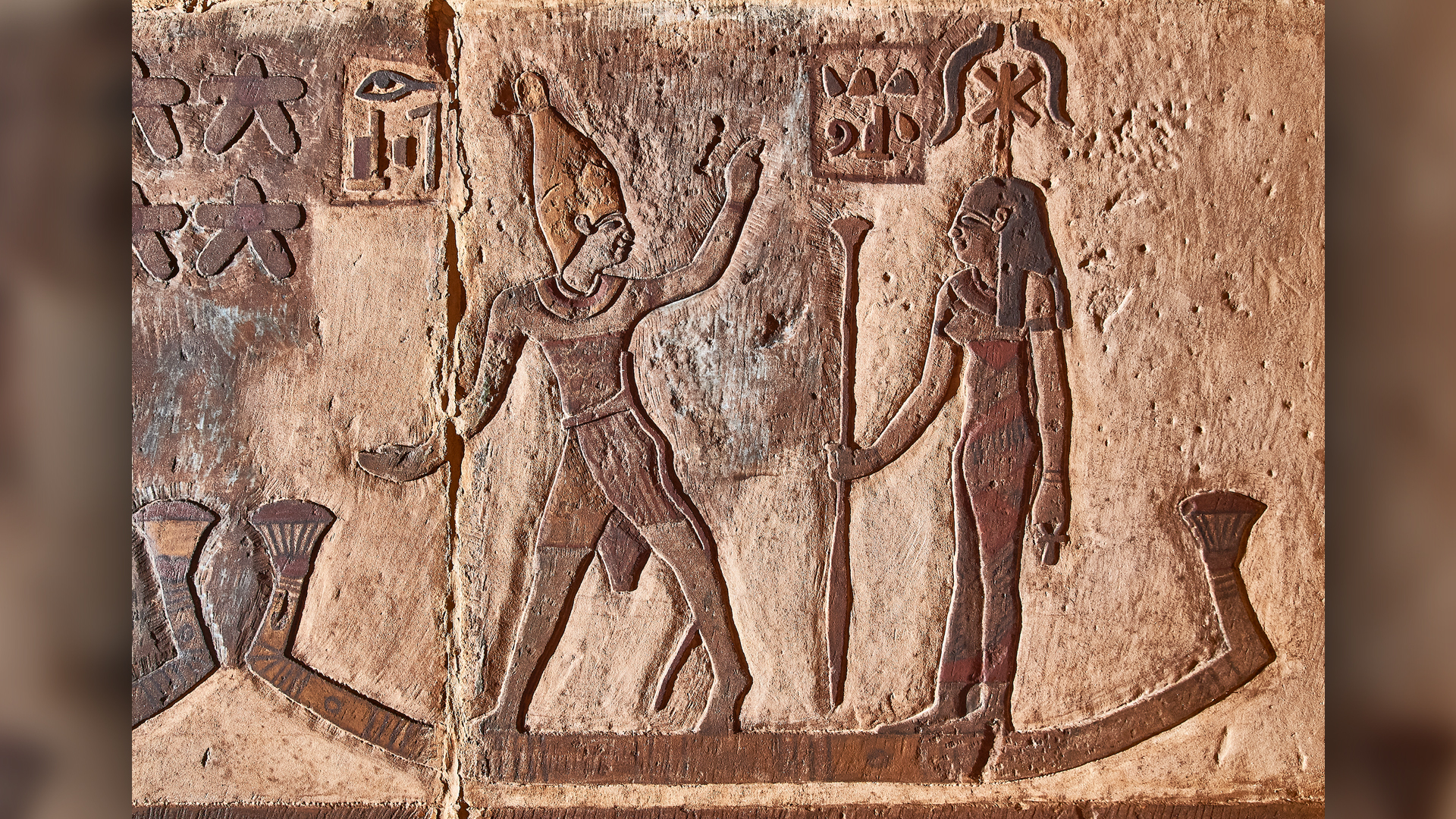
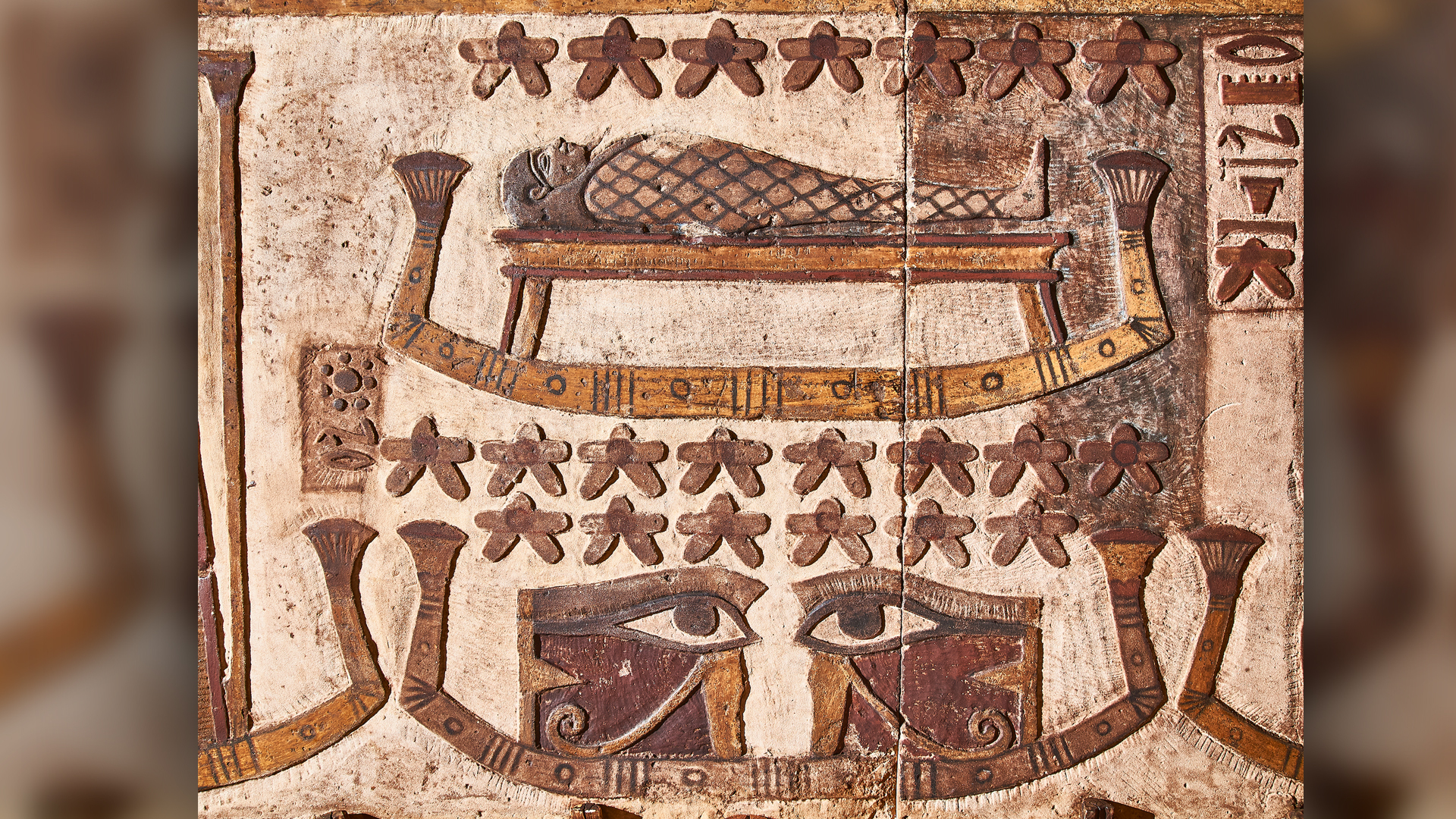
Sanctuary to storage warehouse
The first modern description of the Greco-Roman temple, known as the Temple of Esna, dates to 1589, when a Venetian trader visited Egypt and described it, according to the UCLA Encyclopedia of Egyptology. The town of Esna, about 40 miles (60 kilometers) south of the ancient capital of Luxor, used to have more temples, but two were quarried during the industrialization of Egypt, while the largest one — the Temple of Esna — was used to store cotton during the first half of the 19th century, Leitz said.
Sign up for the Live Science daily newsletter now
Get the world’s most fascinating discoveries delivered straight to your inbox.
This sanctuary-turned-storage facility was likely valued for its location in the city center. People began building houses and shacks directly against some of its walls, and postcards from the 19th and 20th centuries show it surrounded by rubble. Decades of neglect left the temple filthy, covered in soot and bird droppings.
Today, only the vestibule is left. The large sandstone structure is supported by 24 columns and also has 18 free-standing columns decorated with painted carvings of plants. It stands about 120 feet long, 65 feet wide and 50 feet high (37 by 20 by 15 meters). But it would have been dwarfed by the actual temple, built under Roman Emperor Claudius (ruled A.D. 41-54). It's a mystery what happened to this part of the temple; it was already gone by the time the Venetian trader described it in the 16th century.
The temple's construction and decoration, which includes astronomical designs on the ceiling, likely took 200 years, Leitz said.
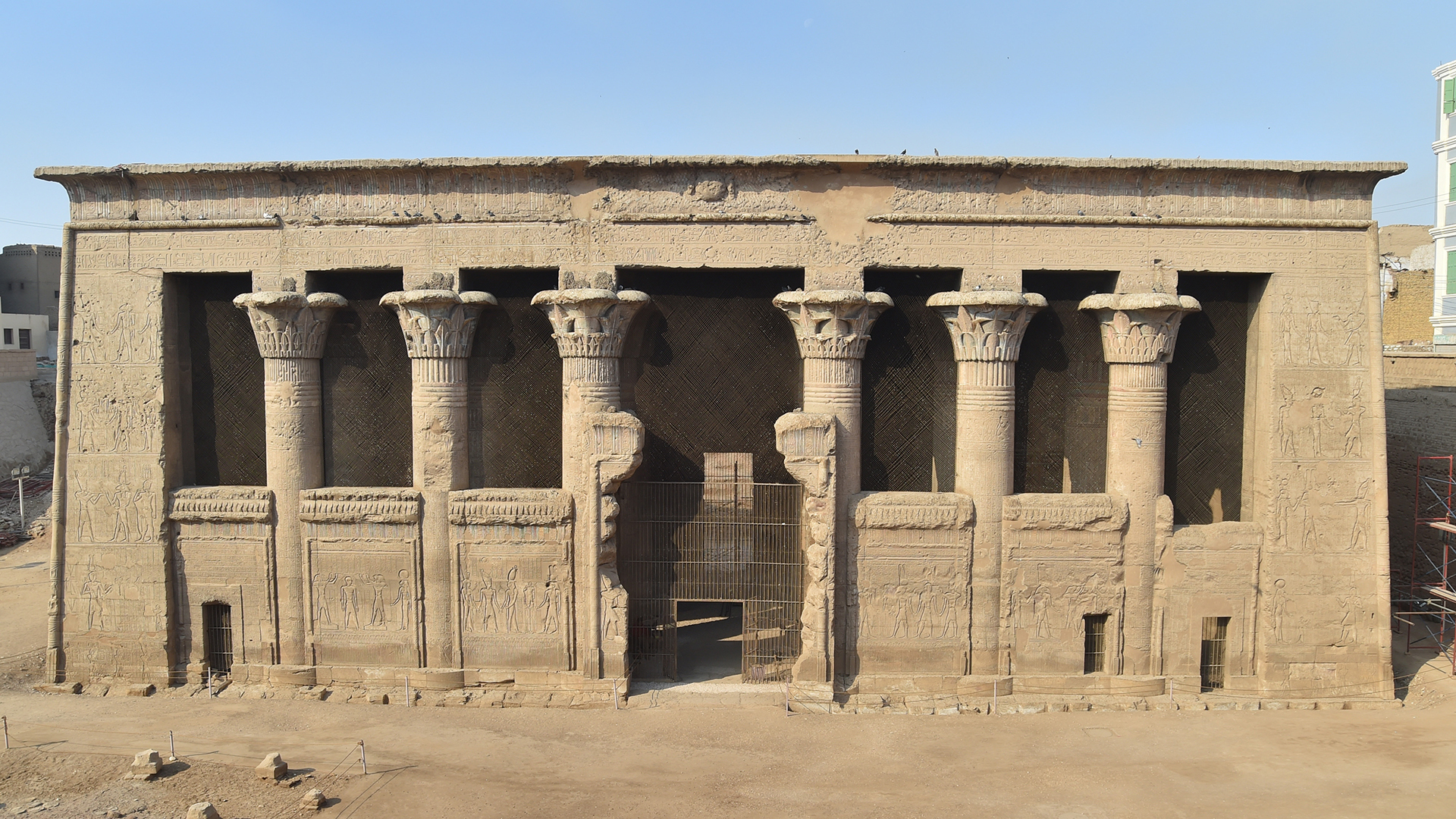
During the latest restoration, researchers discovered new inscriptions, including those of the unknown constellations. Leitz noted that when the ancient Egyptians decorated the temple, they would first draw a design in black ink, then have an artisan carve the relief and then have a painter paint the relief.
On the astronomical ceiling, many of the inscriptions were drawn in ink, but not carved or painted.
"They were previously undetected under the soot and are now being exposed piece by piece," Leitz said.
The project, which began in 2018, is a collaboration between the Institute for Ancient Near Eastern Studies (IANES) at the University of Tübingen and the Egyptian Ministry of Tourism and Antiquities.
Originally published on Live Science.

Laura is the archaeology and Life's Little Mysteries editor at Live Science. She also reports on general science, including paleontology. Her work has appeared in The New York Times, Scholastic, Popular Science and Spectrum, a site on autism research. She has won multiple awards from the Society of Professional Journalists and the Washington Newspaper Publishers Association for her reporting at a weekly newspaper near Seattle. Laura holds a bachelor's degree in English literature and psychology from Washington University in St. Louis and a master's degree in science writing from NYU.










